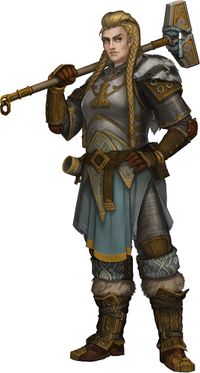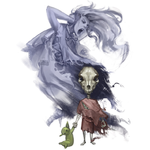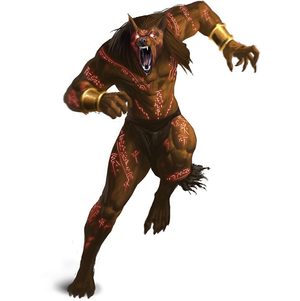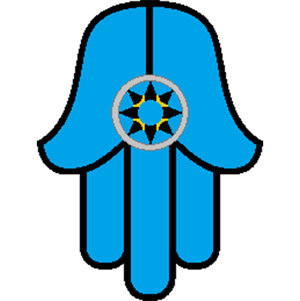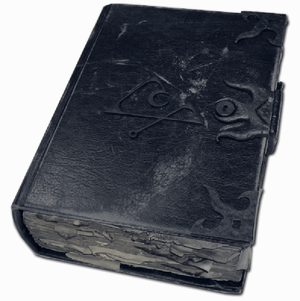Difference between revisions of "Organizations of the Faithful"
(Created page with "==Individual Pages Look Like This== {{TableMain}} {{T01}} | colspan="2" | {{SpanLeft-Start}}image:Org_localized.png Society for Progressive Arcanists{{SpanEnd}}{{SpanRigh...") |
|||
| (43 intermediate revisions by the same user not shown) | |||
| Line 1: | Line 1: | ||
| + | [[image:Org_faithful.jpg|200px|center]] |
||
| − | ==Individual Pages Look Like This== |
||
| + | |||
| + | |||
| + | ==Reading an Organization Entry== |
||
| + | {{OrgsReadingEntries}} |
||
| + | |||
{{TableMain}} |
{{TableMain}} |
||
{{T01}} |
{{T01}} |
||
| − | | colspan="2" | {{SpanLeft-Start}}[[image: |
+ | | colspan="2" | {{SpanLeft-Start}}[[image:Org_global.png]] Temples{{SpanEnd}}{{SpanRight-Start}} {{SpanEnd}} |
{{T02}} |
{{T02}} |
||
| − | | colspan="2"|{{SpanLeft-Start}} |
+ | | colspan="2"|{{SpanLeft-Start}} {{SpanEnd}} {{SpanRight-Start}}'''Locations:''' Worldwide{{SpanEnd}} |
|- |
|- |
||
| + | | style="background:#ccc;" colspan="2"| |
||
| − | | style="background:#ccc;" colspan="2"|Alexandria's Mage's Guild, cut off from Rune. Wizards, Witches, and Sorcerers are generally considered de-facto members of this guild, though clerics of Eluna also pay it patronage. |
||
|- |
|- |
||
| + | | colspan="2"|Most major Temples are a faction unto themselves, and contain many diverse elements. Paladin, monastic and so on traditions, such as Sunguards or Silver Chords are not their own organization, but are rather positions held within that temple. See individual deity entries for their temple structures, roles within that structure, and so on. Class pages also provide examples of their traditional roles within certain temples. While not intended as an absolute, they may help illustrate how the world at large views them. |
||
| − | |valign="top"|'''Leadership and Areas of Influence''' |
||
| + | |||
| − | |{{SocietyOfProgressiveArcanists}} |
||
|- |
|- |
||
| − | | |
+ | | colspan="2"|'''RPP-Related Skills:''' See deity entry. |
| − | |Knowledge/Arcana, Knowledge/The Planes, Spellcraft, Profession/Scribe, Craft/Calligraphy, Craft/Bookbinding, Linguistics (up to 7 skills per org may be listed, 3 of which must be craft/profession/perform and 1 should probably be a knowledge; a single organization may possess up to two of Perception, Bluff, Diplomacy, Intimidate if it fits their theme) |
||
|} |
|} |
||
| + | |||
| + | |||
| + | |||
| + | |||
| + | |||
| + | |||
| + | {{OrgBlock_HuntersoftheDead}} |
||
| + | |||
| + | |||
| + | {{OrgBlock_SilverCrescent}} |
||
| + | |||
| + | |||
| + | {{OrgBlock_HandsofIthildin}} |
||
| + | |||
| + | |||
| + | {{OrgBlock_IronBook}} <!--Additional Listing--> |
||
| + | |||
| + | [[Category:Admin|Organizations of the Faithful]] |
||
| + | [[Category:Organizations|Organizations of the Faithful]] |
||
Latest revision as of 08:00, 11 February 2018
Reading an Organization Entry
| Global | The organization has offices in multiple nations or areas. "Global" here is a relative term, and does not imply centralized control. | |
| Localized | The organization is localized. See entry for details. Many Alexandrian-based groups have this feature! | |
| NPC | Only for NPCs. |
| Common: Serrielite, Gilean, Vardaman, Inquisitor, Paladin, Cleric, Ranger Locations: Alexandria (A15) | |
| An order focused on the eradication of the undead. | |
| These men and women have dedicated their lives to hunting down and destroying the undead. Destruction ranges beyond the battlefield, to the uncovering of necromancers and works to counter Thulite propaganda and cults. The recruiting of new members is semi-formal, and the circumstances may differ on a case-by-case basis. Sufficiently grave threats are usually responded to by a mobilizing of the local members, followed by an organized effort to stop the threat. | |
| RPP-Related Skills: K/religion, K/arcana, Heal, other...? |
| Common: Elunite, Gilean, Danan, Inquisitor, Paladin, Ranger, Bard, Cleric, Druid Locations: Alexandria (A10), Greater Alexandria (H02), Wilderness Pointe | |
| An order focused on the eradication of Caracoroth's influence among lycanthropes. | |
| An order dedicated to the unmasking, hunting, and even conversion of lycanthropes. The Crescent stands opposite the Children of Garm and the latter's cults. Their work is not easy: shapechangers hide easily among everyday society and must often be rooted out before they may be neutralized. Though Elunans form strong numbers among the Crescent, Gilead's and Danan faiths are well-represented.
Some of their most active members are former or current lycanthropic creatures, themselves. In cases like these, the Crescent can provide them a new identity, and means to move forward outside of Garm's clutches. PCs may use the Skinwalker Prestige Class to emulate this heritage. | |
| RPP-Related Skills: Perception, Survival, K/nature, K/local...other? |
| Common: Altheans, paladins, monks, inquisitors, rangers, clerics Locations: Alexandria (A10) | |
| An order dedicated to the spread of nonmagic healing means to uplift poor communities. | |
| The Merciful Althean Order of the Hands of Ithildin, or simply The Hands of Ithildin, is a female-only monastic cult of the Temple of Althea. Their primary duty is to venerate Althea through community service, most particularly through the provision of mundane and thereby affordable healing, care and midwifery skills. In particular, through the teaching of these skills to others in poor areas, as a means to uplift that community and its members.
History There are several theories as to the origin of the Order. Some have aspects of the divine, believing that the first Arma Superius Cassiel Memmius, in life a poor but kindly woman who had died during childbirth, returned to earth from the Elysian city of Ithildin to spread the message of community, healing and the uplifting of the poor. Others have a more mundane explanation, believing it more likely that Cassiel Memmius was the wife of a noble man who became the first patron of the Hands of Ithildin. Ultimately, it is likely that there is some truth to either foundation story.
The Hands of Ithildin are distinct from the general healers of the Temple of Althea in their approach, teaching the importance of mundane healing over miraculous means. Whilst divine favour is not eschewed entirely, often magical means are not available or affordable in impoverished or remote communities; as such, the Hands of Ithildin use mundane medicine, emphasising careful long-term care and herbalism over spells and potions. This message is also expressed through education. In poor communities, the Hands will often invest much time and effort in training local women in healing, herbalism and midwifery, proving these women with important skills as well as a profession. These folk healers become known as gentis medica (pl. gentium medicae) and are often widely revered within their communities.
Doctrine closely matches that of the main body of Althean teaching, but with some differences, which can be summarised through the three main tenets of the faith of the Hands of Ithildin, which are repeated several times daily during individual and group prayer.
The Hands of Ithildin are based upon reasonably loose edicts that cover many aspects of a nun's life, a flexibility reflecting the variability of day-to-day activities of healers, midwives and community teachers. There are some edicts, however, which are based upon the monastic vows of other traditions, which are required to be followed. Some of these are mandatory, and some are optional; all have been developed as part of a lengthy tradition and are carefully controlled. The vows are as follows:
If a Hand of Ithildin breaks one of the mandatory vows (Caelibati, Munditiae, Pacis and Veritatis), they risk serious chastisement from her superiors and colleagues, and may be cast out of the order entirely. With the exception of a nun following the vow of Silentii during her sabbatical, the breaking of the elective vows is not viewed with such seriousness. When the Hands of Ithildin train new lay members in the mundane healing arts (the gentium medicae), they also instruct them in some of the Ithildinis doctrine, but certainly not all. Additionally, a gentis medica is not required to follow any vows.
When a woman joins the Hands of Ithildin, she becomes a manus minor (pl. manūs minōrēs), a 'minor hand', who undertakes training beneath more experienced nuns. Usually a manus minor is brought to the Order at her coming of age; training typically takes approximately 7 years. The penultimate year is spent in the community, providing care alongside other healers, and the final year is a hermetic sabbatical. Manūs minōrēs wear simple blue robes, without adornment or holy symbols, to distinguish them from other members of the Order After the final year of a training, a nun is brought fully into the Order in a ceremony when her robes are exchanged for ones with silver piping at the hems, and with a deep blue image of the Evening Star Telmentar at the collar. At this point the nun is known as a manus (pl. manūs), or 'hand', and is able to work fully and independently in the community. A manus is instructed not only to provide healing, but also to teach others in the mundane arts of healing, particularly the poor and needy, as per the edicts of the Order. Most cities or nations have a branch of the Hands of Ithildin, which are known as a corpus (pl. corpora), or 'body'. Each corpus may have a few dozen manūs and several manūs minōrēs, all under the direction of a single senior nun known as an arma īnferius (pl. arma īnferiōra), or 'lower arm'. Although in a position of power, the cult is somewhat egalitarian, and each manus has an almost equal say in the day-to-day activities of the corpus. An arma īnferius is usually chosen from nuns with a great deal of experience within the community, but the role can be turned down or relinquished at any time. A council of arma īnferiōra, the corpus mājus, meets occasionally to discuss the general activities of the cult, and to elect an overall leader, somewhat of a spokesperson with the main Temple of Althea. This leader is again only slightly superior to the wishes of the general corpus mājus. The order slowly seeks to expand itself. A recent foray was made into Am'shere. Though not rejected, the order was not officially permitted, either. Instead, it is locked in discussions with local elders and ultimately, the Empress. Of particular discussion are the vows, which must, they believe, be adapted to the requirements of that people, and their natures. Likewise, how the order changes to fit the tribal and caste system is in thoughtful discussion. Last but not least, any order must be under the guidance of the Empress, and appropriate castes. Yet, they have not said "no." Daily Activities The day-to-day activities of a Hand of Ithildin are much less rigid than in other monastic orders, reflecting the flexibility required in the work of a healer, nurse or midwife. However, the general pattern of life for a manus is expected to be similar to the following. A manus will rise early in the morning in an individual or shared room in the corpus house, typically several hours before a winter's dawn. Early morning activities include ablutions and private prayer, before a simple communal meal is taken at dawn. Following this, there is a period communal prayer and discussion of the day's activity with other manus. Lecturing of manus minores and gentium medicae usually takes place in the morning, usually finishing slightly before lunchtime, which may or may not be taken communally. Many manus treat this as freetime, to follow personal interests. The afternoon is much more flexible; most manus will undertake community work or training until the early evening, when they will gather for communal prayer and further discussions. Following a large evening meal, the nuns are free to again follow personal interests, although typically remaining within the corpus house. Evensong occurs much later in the evening, with all nuns singing in unison in praise of Althea. Before bed there are evening ablutions and finally, personal prayer. | |
| RPP-Related Skills: Heal, Diplomacy, Profession/Herbalist, Profession/Teacher, Knowledge/Local, Perform/Sing, Knowledge/Religion |
| Common: Daeusite, Paladin, Inquisitor, Cleric, Bard Locations: Alexandria (A10) | |
| A Daeusite group focused on uncovering and eradicating demonic cults across Ea. | |
| The Iron Book is a low-key organization, devoted to research, smiting, and the thorough elimination of demonic cults from the earth. They eradicate them by force, indirect action, and by crowbar. Although they operate underneath the Temple of Daeus, they employ a variety of faiths and people from varying walks of life. Due to the materials they are exposed to, members are asked to follow a general code to protect themselves from corruption. These tenets are things like protecting the innocent, and although you may learn how demons are summoned, it doesn't mean you should. Without these tenets, many temples would not allow them to operate. For the purposes of sanity, demons refers to both demons and devils.
According to their history, the name of this group comes from the acts of an early scholar, who sealed a Book of Hell by encasing it in molten iron. Given demonkind's weakness to the hardy metal, this one act is rumored to have prevented a demon lord's return to Ea's surface, though the lord's name has been lost to history. The success of the scholar's endeavor inspired the Book's creation. In reality, they drew together many separate groups, who had been working towards similar goals, and united them. Composed of a mixture of the faithful, its original purpose was research, with an aim towards demon-eradication from Ea. As the organization developed, however, it found its true calling in the unearthing and destruction of occult organizations crafted by these beings. These cults are often an evil outsider's foothold to power on the Material Plane, and serve as an access point to souls, power, and the expansion of evil's warfare. Today, that is the group's primary focus.
The Book serves many functions within the Temples. First, it provides a means to eradicate demonkind's mortal power bases. Secondly, it provides a place for nontraditional students: paladins who still hold to the faith's tenets but seek a different means of combat, inquisitors with a more specific demonic focus, and even arcane faithful. Demonic cults are a messy business and so the Iron Book's membership is diverse in talents. Combating demonic cults is both a creative and physically dangerous process. Members may be involved in research and infiltration, as well as physical eradication or exorcisms. Paladins who follow this organization are typically students of the Ruse of War, and all members are encouraged to study planar interactions. Inquisitors and monks are not infrequent, and wizard members are often scholars of abjuration and wards. Arcanists who serve are asked to be members of the faithful. The Book delves into dangerous areas and power is seductive; what else led to the fall of Taara's Shadow Children? Actual practice of the arts they study then, is anathema. Without this missive, most temples would not allow them to operate. The order also possesses a number of tenets, to guard against corruption.
Not much is written about the practices of the Book. What is known is below, and written in more general, sweeping statements. Note that specific details may vary from location to location.
Given the nature of its enemy, the Iron Book operates by strict tenets, which are adapted and extrapolated from a singular source, a work published shortly after the Daemonic Wars. The work existed under several names, and has since been copied to international archives.* The Book's version of this work states:
The above rules apply to warfare against the enemy and provide guidelines for behavior. They are intended to serve as protection for the agent against the enemy's corruption. These tenets are taken on top of those associated with the Daeusite and other temples.
Leadership and Areas of Influence The organization itself reports generally to the Daeusite temple structure, and its official head is a Navosian monk. Her best friend and assistant is a sorcerer marked by demonic taint and student of the Temples. Her friend's condition actually spurred the monk's interest in the subject, with the goal of one day curing these sorts of taints. This sorcerer herself is in actuality a friend of Madame Gelfure, who eyes the friendship with amusement and some worry. The Iron Book is a secretive organization, devoted to research and the thorough elimination of demonic cults from the earth--eradicating them by force, indirect action, and by crowbar. There are few formal gatherings, if any, and knowledge of it is more rumor than fact (it's not something brought up in casual conversation); it is unheard of outside of the Temples. Most of its "organizing" actually takes place via oversight--through the Sunguards. This was developed early on as a safeguard, which means the order is essentially powerless. Too, they would hide their resources from the dangerous creatures they hunt. The Iron Book tends to operate in temple basements that have been warded for its purpose. One is located beneath the Temple of Daeus in Alexandria. The Temple of Eluna tends not to host them, as the number of dangerous artifacts would prove too tempting for the forces the Book studies.
| |
| RPP-Related Skills: Knowledge/The Planes, Knowledge/Military Theory, Knowledge/Religion, Knowledge/Arcana, Knowledge/Local, Sense Motive, Bluff |
